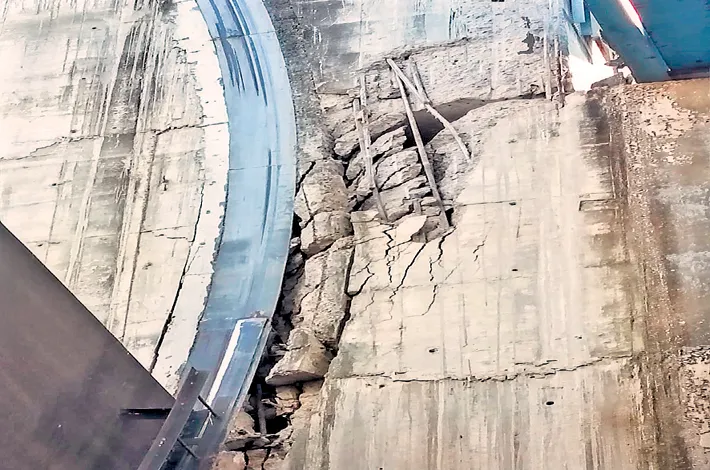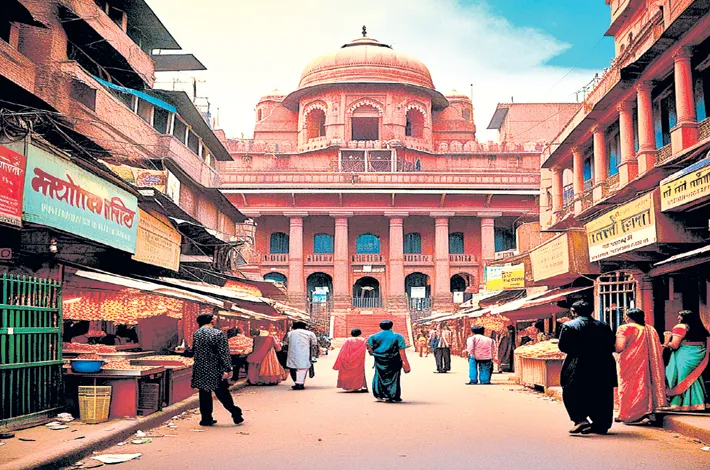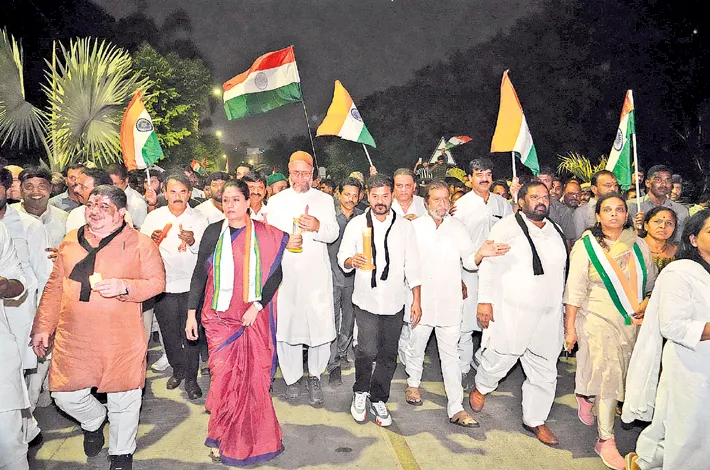Early signs of damage ignored, reveals L&T
25-01-2025 12:00:00 AM

What happened?
* The 20th pier in Block 7 of the barrage sank, leading to a partial collapse of the barrage.
* Major cracks formed in the wall of the 20th pier.
* The cracks spread to nearby piers, including piers 18, 19, and 21.
* The slabs and parapet wall on the 20th pier also sank.
* The radial gate and its hoisting mechanism sustained damage.
metro india news I hyderabad
It is a case of ‘a stitch in time saves nine’. During the Justice P C Ghose-led Commission of Inquiry, established to investigate alleged irregularities in the Kaleshwaram Lift Irrigation Project (KLIP), the representatives from Larsen & Toubro (L&T) disclosed that damage to the downstream apron and dislodging of concrete blocks were observed during the first monsoon season post-inauguration in June 2019 and was reported to the then government but was ignored.
The barrage, inaugurated in June 2019 by the then Chief Minister K. Chandrashekar Rao, suffered damage within months of its commissioning and experienced further deterioration over the subsequent years, culminating in the sinking of six piers in Block 7 in October 2023.
MV Ramakrishna Raju, the then Project Director of L & T for the Medigadda project, S Suresh Kumar, Vice-president and Head, Tunnels wing and Rajnish P Chauhan, Dy General Manager deposed before the commission on Friday.
Early signs of damage ignored
Representatives from Larsen & Toubro (L&T) disclosed that damage to the downstream apron and dislodging of concrete blocks were observed during the first monsoon season post-inauguration in June 2019. These issues were promptly reported to the Irrigation Department, and experts from the Central Water and Power Research Station (CWPRS)-Pune, IIT Hyderabad, and other institutions visited the site to recommend corrective measures, including slowing water velocity to protect the structure.
Despite these warnings and recommendations, no remedial actions were implemented over the next four years. This prolonged inaction led to the eventual sinking of six out of 11 piers in Block 7. The cascading effects of high water velocity, far exceeding design limits, were cited as a primary cause of the damage.
Ramakrishna Raju informed the commission that L & T bagged the Medigadda contract out of three competitors in August 2016 and the work was completed in June 2019. He said that after the initial damages were noticed by them, the same was informed to the irrigation department and later experts from various noted institutions came on board to assess the situation through series of visits, meetings till February 2020, but no corrective measures were done leading to eventual big damage four years later.
When the commission grilled whether L & T, being such a reputed company with a track record, did not review the project designs submitted to them by the department as any unforeseen incidents later may affect its reputation overall, Ramakrishna Raju answered that it was an item-rate contract to complete the construction work in a two-year period.
He further said that at the time of bagging the contract no land was offered at the site by the department and the land in the Right Bank and Left Bank were offered in phases in later months.
L&T officials explained that the barrage was designed to withstand a water velocity of 6 m/sec, but in November 2019, velocities as high as 16 m/sec were observed. The firm also highlighted challenges related to phased land acquisition that stretched on for nearly over a year till May 2017 and their efforts to ensure quality by doubling equipment and resources and deploying 6,000 workers instead of the initially planned 3,000.
As it was an item-rate contract, our sole objective was to look at the task from a constructability point of view and assess and resolve issues that come our way in terms of meeting the desired timelines. We were given the designs and drawings to construct the project, which we did without compromising on quality and also.
The representatives stated that seepage occurred due to water hitting sand directly at high velocity, exacerbating structural damage. They also revealed that a temporar/y Copper Dam was built up to the barrage height to withstand monsoon floods, for which L&T has not been certified or compensated.
Restoration feasibility and future actions
When questioned about the possibility of restoring Block 7, L&T representatives informed the commission that restoration is no longer viable. Instead, they suggested constructing a new supporting structure or implementing arrangements upstream and downstream to mitigate water pressure and velocity.








